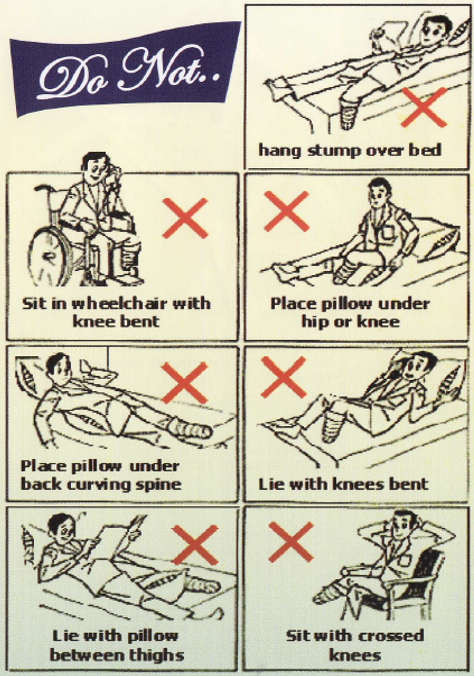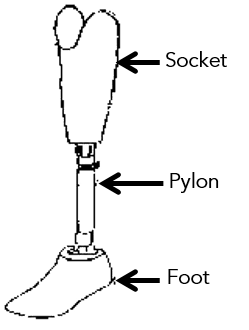We are Here to Help Achieve Your Goals
The period before and after amputation may be very difficult, both emotionally and physically, for you and your family.
Every day, countless amputees are successfully returning to their previous lifestyle and enjoying an active career, family and social life with the help of a prosthetic leg.
Our team of prosthetic and rehabilitation professionals are here to help you achieve these goals.
This guide will help you gain a better understanding of what to expect after amputation and what you can look forward to in the future. It is a brief introduction to the healing process, hospital stay and prosthetic rehabilitation.
Who Will You Meet From the Rehabilitation Team?
Several healthcare professionals will be involved in your hospital rehabilitation, including:
- Prosthetist
- Surgeon
- Physiotherapist
- Doctor
- Occupational Therapist
- Nurses
- Podiatrist
- Social Worker
What to Expect After Your Amputation?
Immediately after amputation, the primary concern of the doctors and nurses is to ensure the successful healing of your wound.
Along with regular inspection and monitoring, you may be required to wear a special rigid dressing, custom made by your prosthetist, to help relieve pain, control swelling and protect the wound, thereby speeding up the healing process.
Physiotherapy and Exercise
You will go through exercises with a physiotherapist daily. Regular exercise will help you maintain and improve muscle strength, joint flexibility and general well being.
Stretching exercises, particularly for the hips and knees, are extremely important in preventing muscle contractures or tightening that can stop you from using a prosthetic leg in the future.
What Should You Not Do After Your Amputation?

What to Expect After Discharge?
You will be given an Amputee Clinic appointment about three to four weeks after your discharge from the hospital, or when your wound is fully healed.
You will meet your prosthetist to discuss your potential for a below knee prosthetics.
What is a Below Knee Prosthesis?
A Below Knee Prosthesis is a prosthesis or artificial limb for below-knee amputees and has 3 main parts.

Each part is specially chosen by your prosthetist according to your goals and activity level. This lets you gain maximum use from your prosthesis.
Prosthetic Cover
The completed prosthesis will have a foam covering. This is to protect the parts and improve its aesthetic appearance.
Shoes
The prosthesis MUST be worn with shoes at all times. It will be uncomfortable, difficult to use and easily damaged if worn without shoes. Ideally, your shoes should have comfortable support with shoelaces and a closed front e.g. running shoes.
Prosthetic Fabrication and Fitting
All prostheses are made on-site at the Foot Care and Limb Design Centre (FLC) and are fitted by your prosthetist. Gait training will commence after the first fitting of your prosthesis.
What to Expect After Getting Your Prosthetics?
Prosthetic Gait Training
- You will be required to go through gait training regardless of your age, strength or activity level.
- These physiotherapy sessions will train you on using your prosthesis safely and confidently before taking it home.
- You will also learn basic stump management and how to care for your prosthesis.
Wearing-in Time (Seasoning)
- At the start, you should only wear your prosthesis for short periods each day until your skin has adjusted to it. This is to ensure that you do not overstress your skin.
- Wearing-in time is different for each amputee; your prosthetist and physiotherapist will help you establish a wearing-in schedule.
When will You Need to Replace the Prosthetic Socket?
- Your first socket may need replacement approximately 6 to 18 months after fitting.
- It is common for your residual limb to change in shape and size during the healing process. This occurs differently for all amputees. The socket may become loose and uncomfortable. When this happens, the prosthetic socket can be replaced while re-using the remaining parts, depending on their condition.
- Please contact us if you have any further questions. Our team of dedicated prosthetists will be able to assist you.
Opening Hours
- Mondays – Fridays - 8.00am to 5.00pm
- Saturdays - 8.00am to 12.00pm
Download PDF, 1.25MB, PDF
